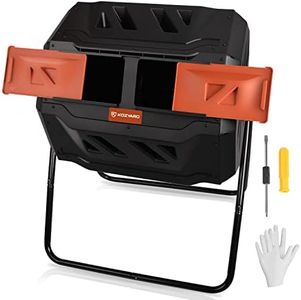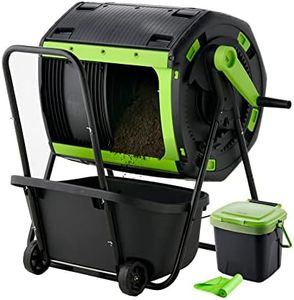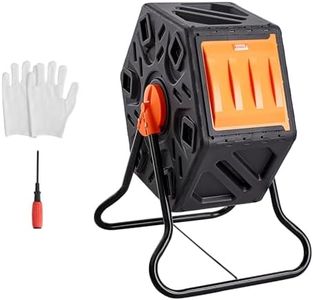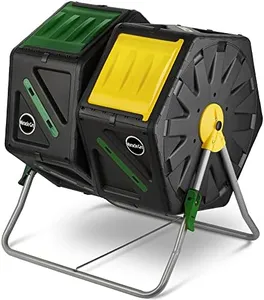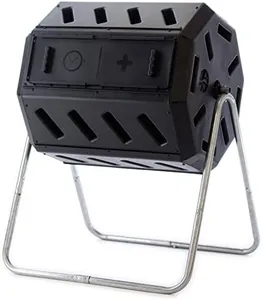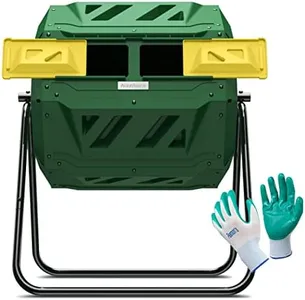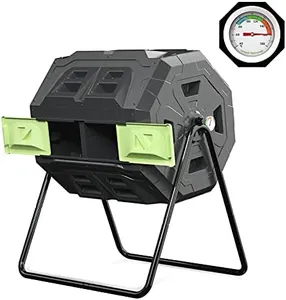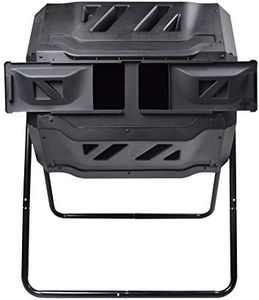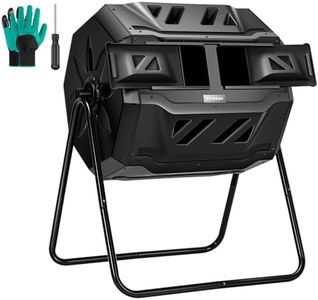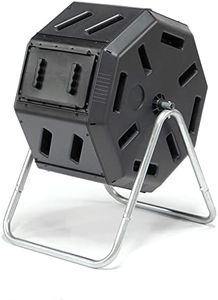We Use CookiesWe use cookies to enhance the security, performance,
functionality and for analytical and promotional activities. By continuing to browse this site you
are agreeing to our privacy policy
10 Best Rotating Compost Bins
From leading brands and best sellers available on the web.Buying Guide for the Best Rotating Compost Bins
Choosing the right rotating compost bin can make composting easier, faster, and more enjoyable. The key is to understand how these bins work—they are designed to be turned regularly, mixing your compost materials and helping them break down more quickly. When picking a compost bin, think about your household size, how much kitchen and yard waste you generate, and where you're going to place the bin. By focusing on a few key specifications, you can find a bin that fits your needs and makes composting a hassle-free part of your routine.CapacityCapacity refers to how much compostable material the bin can hold and is usually measured in gallons or liters. This is important because the right capacity prevents overloading and ensures efficient composting. Small bins (under 30 gallons) are good for singles or small families, while mid-sized bins (30-60 gallons) suit most average households. Large bins (over 60 gallons) are better for big families or people with a lot of yard waste. When choosing, consider how much waste you generate each week and if you want to compost just kitchen scraps or both kitchen and yard waste.
Aeration/VentingAeration refers to how well air flows through the bin, which is essential for breaking down compost quickly and preventing odors. Rotating compost bins usually have ventilation holes or slats. More aeration means faster decomposition, but too much can dry out the compost. If you live in a very wet area, a bin with good airflow helps prevent soggy compost, while drier climates may benefit from bins with moderate venting to retain moisture. Think about your local weather and what materials you’ll be composting when deciding the right level of aeration.
Material and DurabilityThe material of the bin affects how long it will last and how well it insulates heat. Bins are usually made from plastic or metal. Sturdy, UV-resistant plastic is common and resists rust and weathering, while metal bins are very durable but can heat up or cool down quickly depending on the climate. If you plan to use the bin year-round or leave it outside in harsh weather, choose a material that suits your climate and won’t degrade or rust easily.
Ease of RotationThe ease of rotation is about how simple it is to turn the bin. This matters because regular mixing is key to fast, smell-free compost. Some bins have smooth handles or gears to make turning easier, especially when full, while others are simpler and may require more strength to rotate. If you prefer low-effort gardening or have any physical limitations, look for a design that promises easy turning, especially as the bin fills up.
Dual ChambersSome rotating compost bins have two separate chambers, letting you start one batch while another finishes decomposing. This is great if you want a continuous supply of compost rather than waiting for a single batch to finish before starting a new one. Single-chamber bins are simpler and a good pick if you’re just getting started or don’t need a constant supply. Consider how often you’ll use finished compost and if you like a smooth workflow when deciding if dual chambers make sense for you.
